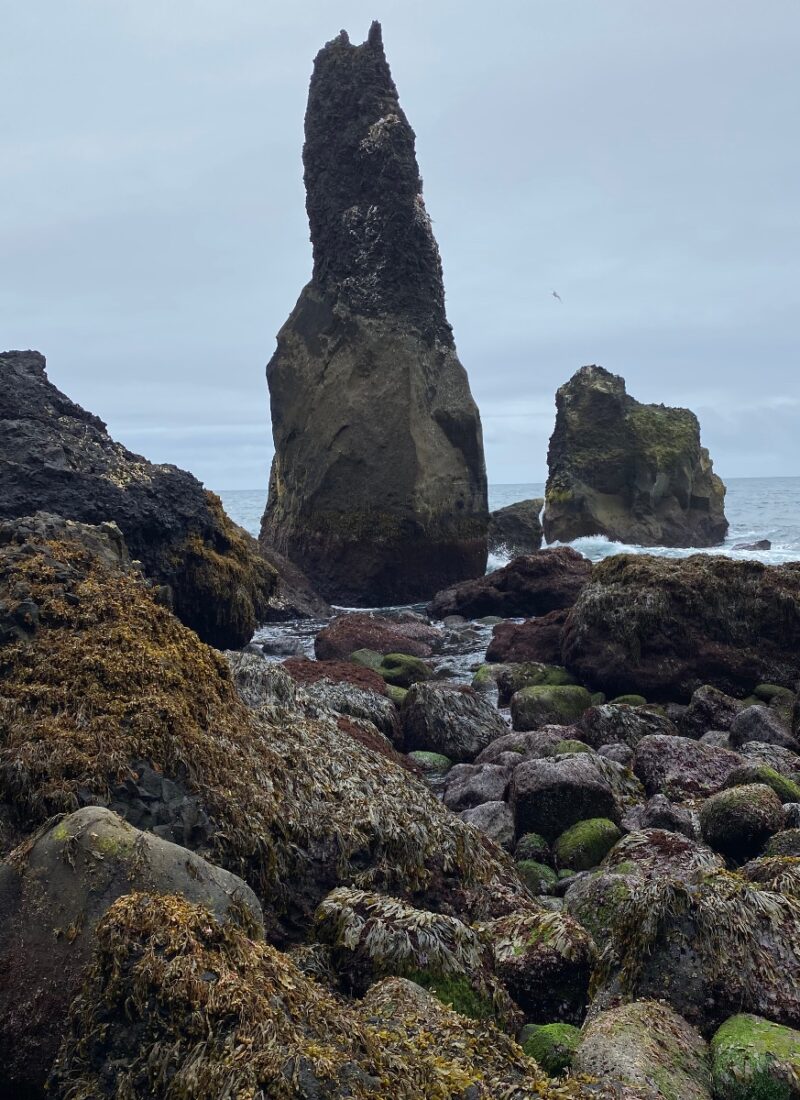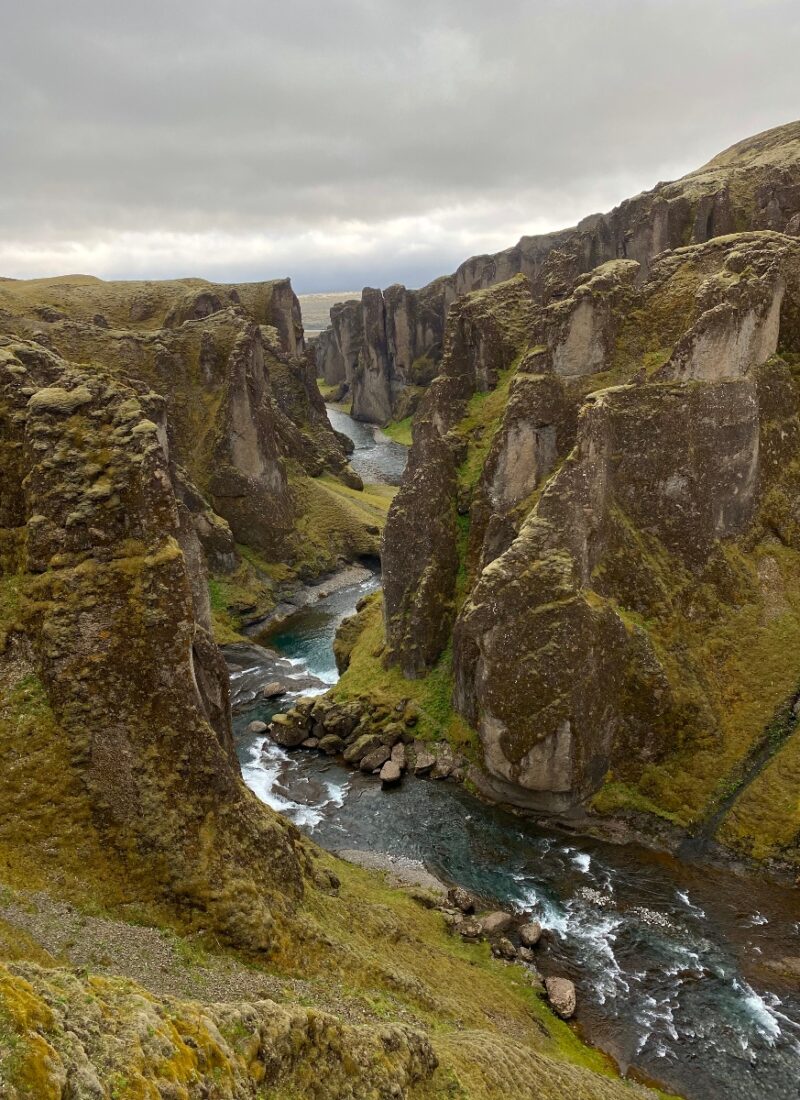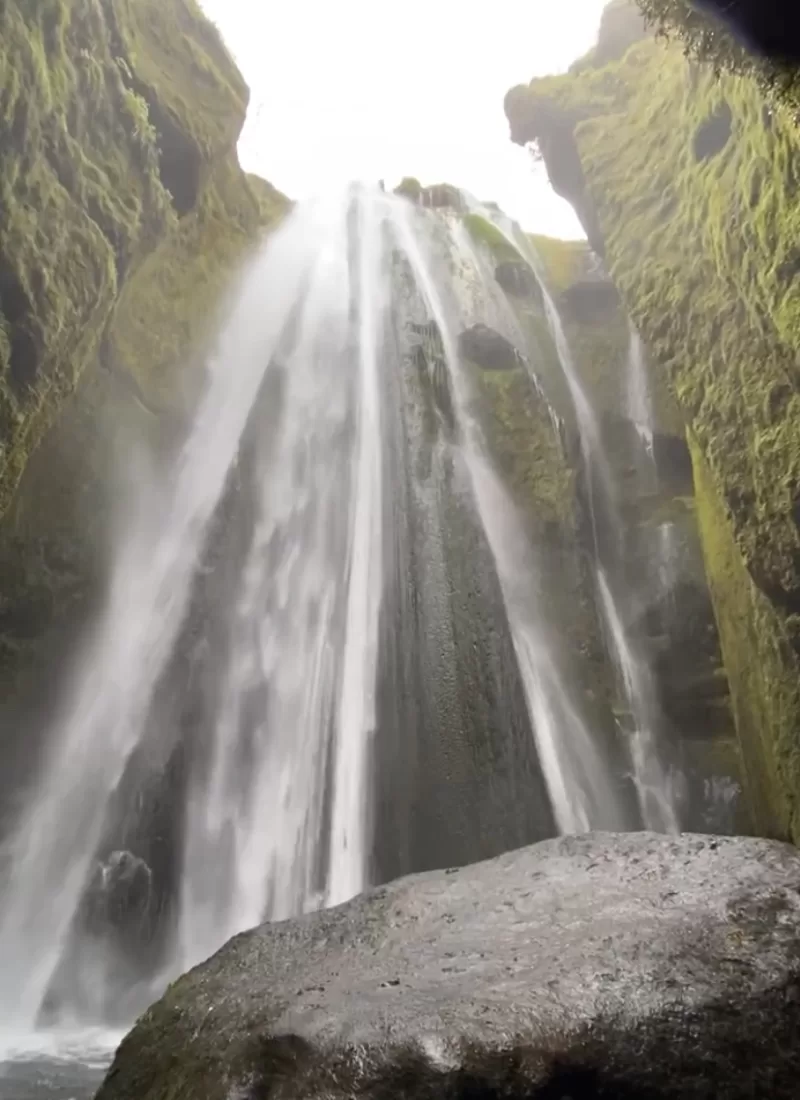Djúpalónssandur is one of the must see places on Snæfellsnes Peninsula in Iceland. It’s surrounded by old lava fields and on the beach itself you’ll find some beautiful lava formations. The combination of these traces of volcanic eruptions and Snæfellsjökull Glacier standing tall in the background, makes this small beach pretty amazing.


Snæfellsnes Peninsula is Perfect for a Day Trip
Snæfellsnes Peninsula has been getting more and more attention from tourists in recent years. And for a good reason. Snæfellsnes offers some diverse and beautiful scenery in a fairly small area. Some even call it Iceland in miniature as here you’ll find different kinds of mountains, volcanoes and lava fields. A glacier, waterfalls (no big ones though), beautiful black beaches and more. Sounds pretty good, right?
It takes about 2 hours to reach Snæfellsnes Peninsula from Reykjavík. Then it takes a little less than 3 hours to drive all the way around it. That is if you also include a visit to Stykkishólmur, which is a short detour. You can easily see all the major sites in one day so a daytrip from Reykjavík could be perfect for you. Or perhaps a one day detour when driving the Ring Road.
Besides the major attractions there are plenty of other places to explore. So if you have the time you could easily spend two or more days in the area. Especially if you plan some activities like a snowmobile tour on the glacier or maybe a visit to Flatey Island. A small charming island on the bay out of Stykkishólmur. Visitors are not allowed to bring their cars and the atmosphere is so relaxing. Some say it feels like time stands still on this little island.
You can see a few pictures and read a little bit about this charming little island here.Djúpalónssandur Black Beach is a Must See when Driving around Snæfellsnes Peninsula
One of the absolute must sees on Snæfellsnes Peninsula is Djúpalónssandur. A beautiful black beach located at the very end of the peninsula. I wouldn’t call it a black sand beach as it’s more of a black gravel beach. The gravel stones there are so smooth that they’re almost soft.
Djúpalónssandur beach is surrounded by old lava fields and on the beach itself you’ll find some beautiful lava formations. The combination of these traces of volcanic eruptions and Snæfellsjökull Glacier standing tall in the background, makes this small beach pretty amazing.
It’s kind of sad though to see how small Snæfellsjökull Glacier has become. You can see obvious marks on the mountain below it. Marks that show where the glacier used to cover the mountain not too long ago. One of the clear indicators of global warming we see here in Iceland.


On Djúpalónssandur Beach you’ll also find some iron remains from a British ship that was wrecked east of the beach in 1948. Five of the crew of nineteen were saved that night.
Sadly, this isn’t the only ship that has been wracked or stranded in these waters. Another example is an Icelandic ship that was stranded in 1925. Fortunately, this time the crew was saved after seven hours on sea on lifeboats.
Dritvík is a Hidden Gem in an Easy Walking Distance from Djúpalónssandur
Little north of Djúpalónssandur you’ll find a small bay called Dritvík. A beautiful little spot where you most likely will have the place for yourself. It doesn’t look like a large portion of the people who visit Djúpalónssandur actually do the hike over to Dritvík. At least they didn’t when I was there. I had the place completely for myself. So nice. Just sitting on the beach on this beautiful and calm day in May. Enjoying the view of the lava formations (which by the way are a bit different from those in Djúpalónssandur) and listening to the ocean. Just perfect.
This lovely spot also has some interesting history. Here was the largest and most productive spring fishing in Iceland from the middle of the 16th to the middle of the 19th century. Often there were 40-60 boats based in Dritvík at that time and anything from 200 – 600 men worked there. Some remains of stone structures from that time can be found near the beach.


It’s a bit hard to imagine so many people and boats in this spot at the same time. How crowded it must have been. And the poor housing conditions they had to live with. If housing is even the right word for it. Sometimes I wonder how in the world my ancestors simply survived the often extremely hard conditions in Iceland back in the day. At the same time I’m so incredibly grateful that they did! Otherwise I wouldn’t be living here today.
The Trail from Djúpalónssandur to Dritvík
To get from Djúpalónssandur over to Dritvík you follow a marked trail. It starts on the right side (when facing the ocean) of Djúplónssandur. Very close to where the iron remains lie on the ground. You shouldn’t miss it, there is a quite big trail marker where it starts.
You can also check out my track of this hike on Wikiloc.It’s a really nice and easy hike through an old lava field with the ocean on one side and Snæfellsjökull Glacier on the other. And it’s not long. Just about 3km/1.8mi in total.


So if you’re planning on traveling around Snæfellsnes Peninsula, you should definitely make a stop at Djúplalónssandur. It’s one of the must sees in the area for sure. And if you ask me, a hike over to Dritvík is also a very good idea. As long as you have the time. Cause that’s always our biggest issue right? So many places to see, so little time!
Another Must Do Hike on Snæfellsnes Peninsula
While on the subject of hiking trails there is another trail on Snæfellsnes Peninsula you just don’t want to miss. It’s a bit longer than this one or about 7km/4.3mi out and back. But so totally worth it. It’s a hike along the shore between two tiny villages called Arnarstapi and Hellnar. It’s my favourite hike on Snæfellsnes Peninsula and simply a must do. You can read all about it here.
If you liked this post and think some of your friends might be interested in reading it too, please help me spread the word. I’d really appreciate it if you’d share it on social media or just send it directly to a friend.
Until next time!




Steven Hildreth says
Hi! It is a very lovely place. Are the ‘lifting stones’ still there to check the strength of boatmen to decide what job to give them?
j.siggadottir says
Yes they are, at least they were last time I checked 🙂 And I agree with you, this sure is a lovely place 🙂